Students Succeed in Early-Stage Prototyping
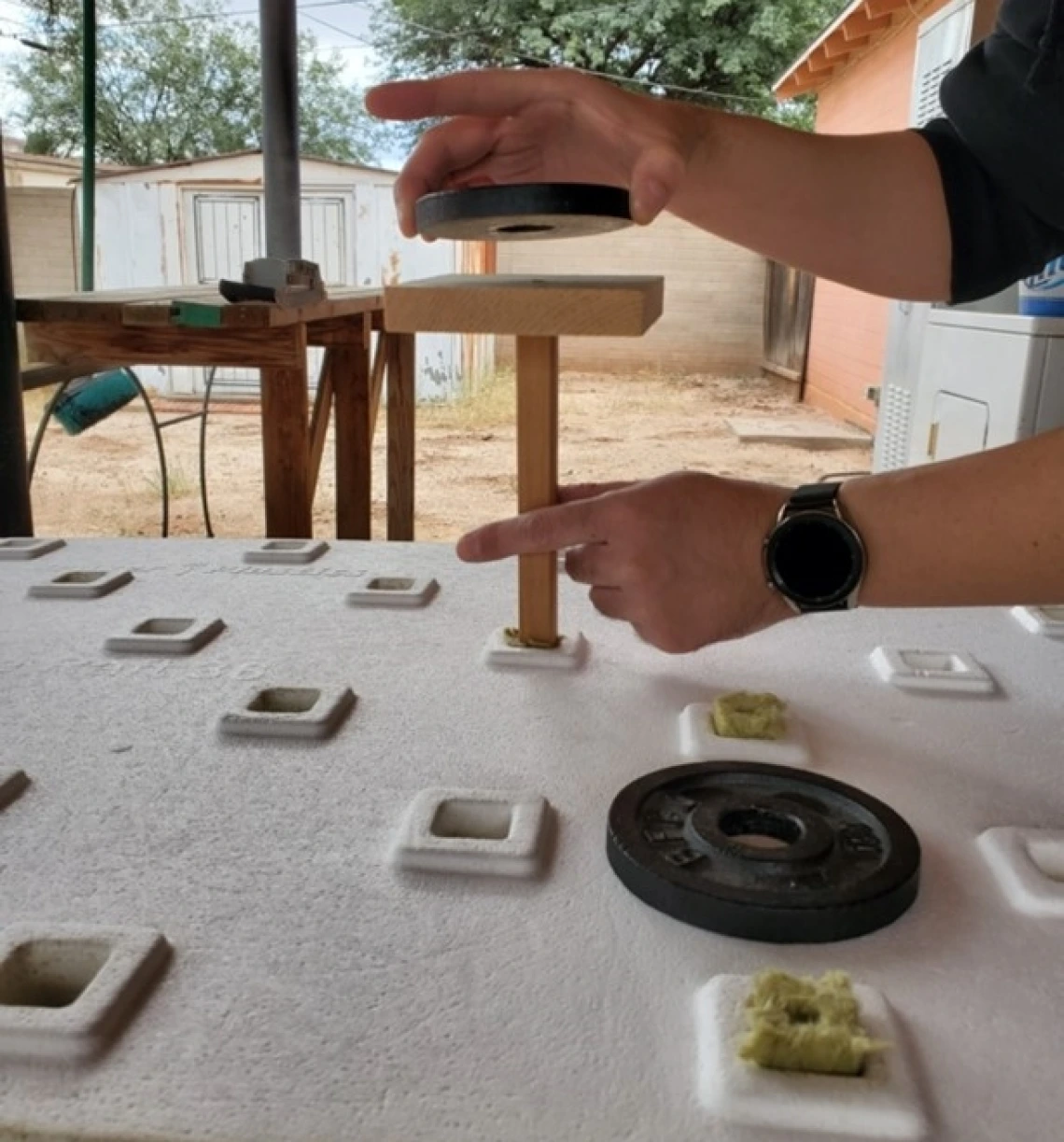
Measuring force with a set of dumbbell weights.
Interdisciplinary Capstone debuted a new format in the 2021-2022 academic year. Requiring students to begin the prototyping process earlier uncovers potential problems and reduces design risk.
So far, the initiative has been a success.
Slide Labeling Soap
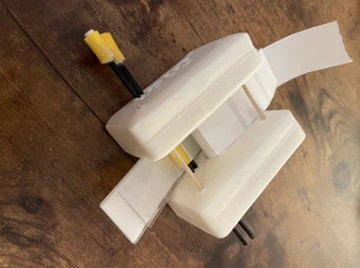
A slide labeler prototype made of toothpicks and soap.
Team 22006 is developing an autonomous slide label applicator for Roche Tissue Diagnostics to minimize the time, effort and errors associated with applying labels manually. They're calling the device the Slide Label Applicator for Simplified Handling, or SLASH. Some of the requirements are that the prototype be able to label a slide in fewer than 10 seconds, that it can handle 30 slides without user intervention after the slides have been loaded, and that it be small enough to fit on a customer lab benchtop.
The prototype incorporates gears, rollers, stepper motors, sensors and a conveyor belt. To demonstrate the proof of concept, mechanical engineering student Cole Carrigan created a prototype using toothpicks and bars of soap.
Monitoring Swelling and Restless Legs
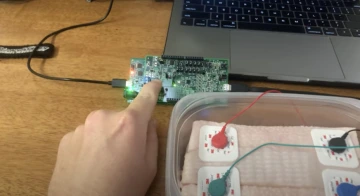
Testing water levels in a piece of meat.
Team 22054 is sponsored by the Kidney ADVANCE Project, part of the National Institute of Health and the Arizona Center for Accelerated Biomedical Innovation. Students are developing a device to monitor fluid buildup in the blood vessels of the lower leg, a symptom of renal failure. The device will connect to a phone app that measures leg water content relative to overall body water content; edema, or the amount of swelling; and motions that are indicative of restless leg syndrome.
The team has already developed an accelerometer setup, a Bluetooth connection, electrodes, and code for the device to conduct measurements. Measuring only 48 mm by 37 mm, the device is designed to wrap around a patient’s leg.
To test the prototype, they attached the device to a piece of meat with varying amounts of added water.
Turkey Saws and Plungers for Harvesting Plants
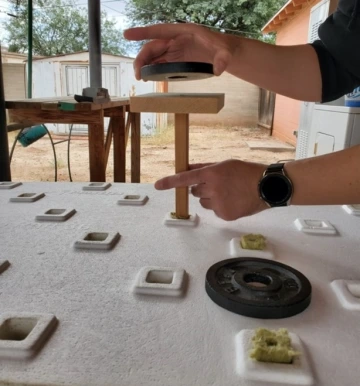
Measuring force with a set of dumbbell weights.
Team 22043 is building an autonomous robotic harvesting system for vertical farming for scientists in the Department of Biosystems Engineering, the team’s sponsor. The device separates and sorts the edible and root portions of leafy greens and microgreens, providing a low-cost alternative to human labor. It must completely remove the edible portion, while leaving just enough of the plant for continued growth.

Testing out cutting mechanisms for plants grown in vertical farming environments
The team got creative in early-stage prototyping, testing out a handheld saw and a turkey cutter to determine the best type of cutting system. The device must also remove plugs on the growing raft that become filled with roots. The team used dumbbell weights and a plunger to determine how much force it would take to remove the plugs.
Keeping Watch via a Watch
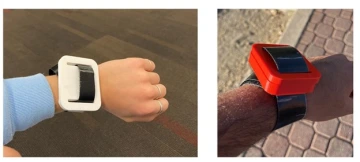
Students testing the wearability of their prototypes in different environments.
Team 22011 is creating a device for Regenesis Biomedical to monitor whether participants are adhering to clinical trial requirements. Clinical trials cost millions of dollars, but according to Regenesis, after 150 days, about 40% of patients are no longer in compliance. This non-adherence makes clinical trials even more costly and complex and compromises the quality of the data. The team is designing a wearable pulsed electromagnetic field sensor to monitor patient compliance, with the goal of reducing cost of clinical trials and providing real-time access to patient information.
The team developed a 3D-printed prototype of a watch that will contain all the necessary electronics. Two team members then wore the device, testing it in multiple environments.

